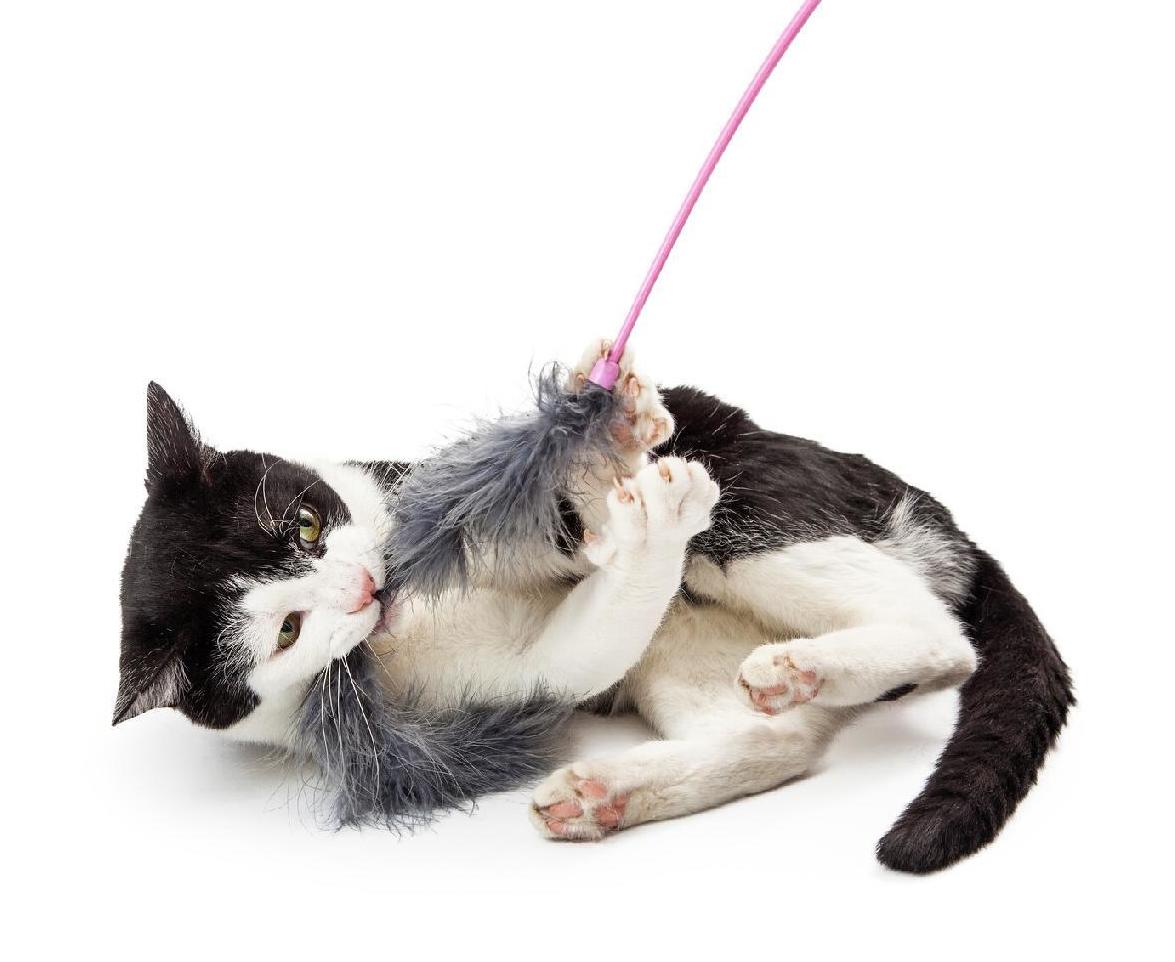f e l i n e
Playing It Safe Andrea Carne reports on a new study that reveals how playtime and a meatier diet can reduce hunting behavior in cats
A study by Cecchetti et al. (2021) found that cats who engaged in play with their guardians using a wand toy for just 5 to 10 minutes a day brought home 25% fewer prey animals
© Can Stock Photo / adogslifephoto
Play with your cat more – and give him a meaty diet…” I wouldn’t be surprised if variations on this kind of advice has been given by vets and cat behavior consultants over the eons. And indeed, in addition to being supportive of feline wellbeing in gen eral, a new study suggests it could also reduce hunting behavior and, perhaps more importantly for many cat guardians, reduce the number of prey animals brought home as unwanted “gifts.” The study, conducted by Martina Cecchetti and colleagues from the University of Exeter in the U.K. and published earlier this year, looked at various types of “interventions” aimed at reducing feline hunting, rather than impeding it, and whether these interventions had an effect on the amount of prey brought home. As the study explains: “Predation by domestic cats Felis catus can be a threat to biodiversity conservation, but its mitigation is controversial. Confinement and collarmounted devices can impede cat hunting suc cess and reduce numbers of animals killed, but some owners do not wish to inhibit what they see as natural behavior…” (Cecchetti et al., 2021). So, instead of interventions which work on impeding hunting behav ior – including complete confinement indoors, for instance – the study looked at what it calls “noninvasive” interventions which aim to reduce a cat’s want or tendency to hunt and/or their success in doing so, and whether these can actually be effective.
“
Research The research team focused on 219 homes in southwest England in which 355 cats resided. The guardians chosen were those whose cats regularly hunted and captured wild animals and brought them back
44
BARKS from the Guild/May 2021
home. Of the feline participants, 30 were given a bell to wear on their collars and 33 were given a specific Birdsbesafe branded soft collar (see box on opposite page) to wear (both aimed at scaring off prey). A fur ther 41 cats were given a puzzle toy for food dispensing, 40 were given a meatier diet (commercial, grainfree food with meat as the primary source of protein) and 38 were played with on a daily basis. There was also a control group in which nothing was changed whatsoever. Over a period of 12 weeks, the cats were studied via guardians re porting on the number of prey animals brought home each day by each cat, and compared that with numbers of same logged by guardians over a sevenweek period prior to the introduction of the interventions. The study ultimately found that cats who engaged in play with their guardians using a wand toy for just 5 to 10 minutes a day brought home 25% fewer prey animals. In addition, it found that cats fed more meat based protein in their meals brought home 36% less prey. It’s worth noting here that cats do not bring home all the prey that they kill. However, it’s reasonable to assume cats are generally consis tent with the percentage they bring home, making the study still rele vant in comparing numbers.
Results The results were interesting on a number of levels. Strange as it may seem, the cats given puzzle toys actually hunted more. And while the Birdsbesafe collars were effective in reducing the numbers of birds brought home (by 42%), they had no effect on the number of mammals caught. However, while there were varying degrees of success with all items, the meatier diet and playtime came out on top as being the most















